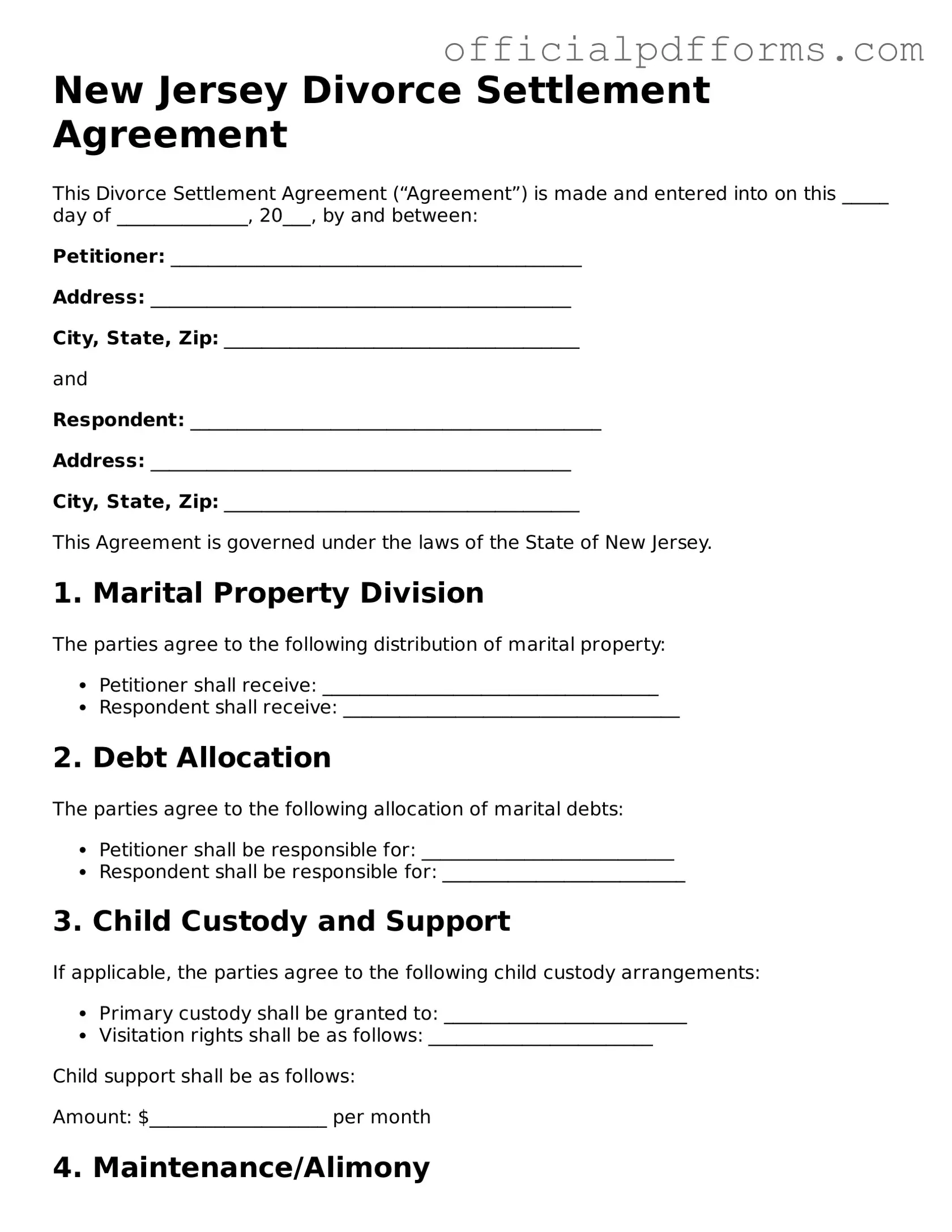What is a New Jersey Divorce Settlement Agreement?
A New Jersey Divorce Settlement Agreement is a legal document that outlines the terms of a divorce between two parties. It covers various aspects such as property division, child custody, child support, and alimony. This agreement serves as a binding contract once both parties sign it and is submitted to the court for approval.
Who needs a Divorce Settlement Agreement?
Any couple seeking a divorce in New Jersey should consider creating a Divorce Settlement Agreement. This document is essential for those who have children, shared property, or financial obligations. It helps ensure that both parties agree on the terms of the divorce, which can simplify the legal process.
What should be included in the agreement?
A comprehensive Divorce Settlement Agreement should include the following:
-
Division of marital property and debts
-
Child custody arrangements
-
Child support payments
-
Spousal support (alimony) terms
-
Health insurance coverage for children
-
Any other relevant financial agreements
Including these elements can help prevent future disputes and provide clarity for both parties.
How is the agreement finalized?
Once both parties agree on the terms, they must sign the Divorce Settlement Agreement. After signing, the document is submitted to the court for approval. The court will review the agreement to ensure it is fair and in the best interest of any children involved. If approved, it becomes part of the final divorce decree.
Can the agreement be modified after it is signed?
Yes, a Divorce Settlement Agreement can be modified, but only under certain circumstances. If there is a significant change in circumstances, such as a job loss or a change in the needs of children, either party can request a modification. The request must be submitted to the court, which will review the situation and determine if changes are warranted.
What happens if one party does not comply with the agreement?
If one party fails to comply with the terms of the Divorce Settlement Agreement, the other party has legal options. They can file a motion with the court to enforce the agreement. The court may impose penalties or require the non-compliant party to fulfill their obligations. It is essential to document any violations to support the enforcement process.
Is legal representation necessary to create a Divorce Settlement Agreement?
While it is not legally required to have an attorney when creating a Divorce Settlement Agreement, it is highly recommended. An attorney can provide valuable guidance, ensure that the agreement complies with New Jersey law, and help protect your rights. Having legal representation can also reduce the risk of future disputes.
Divorce Settlement Agreement forms can be obtained from various sources, including:
-
The New Jersey Courts website
-
Local family law attorneys
-
Legal aid organizations
-
Online legal document services
Ensure that the form you use is up-to-date and compliant with New Jersey law to avoid any complications during the divorce process.
